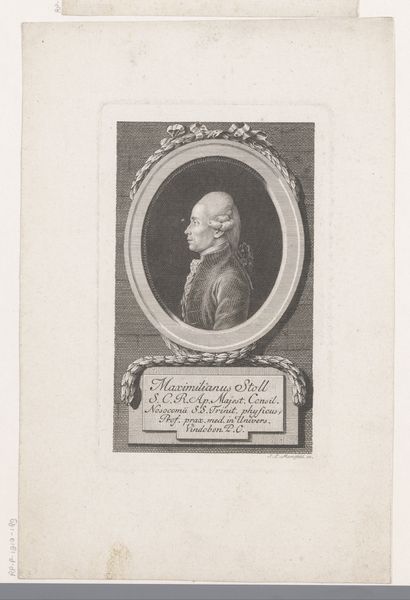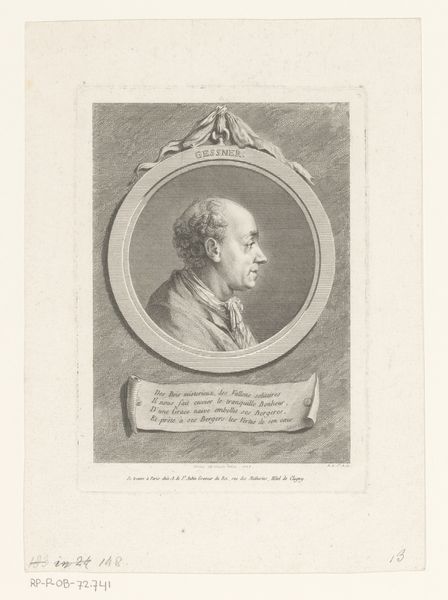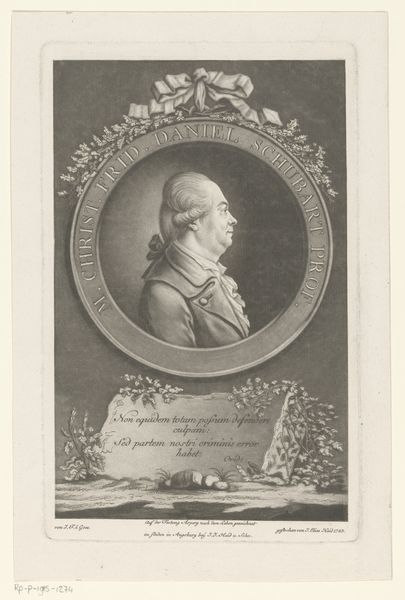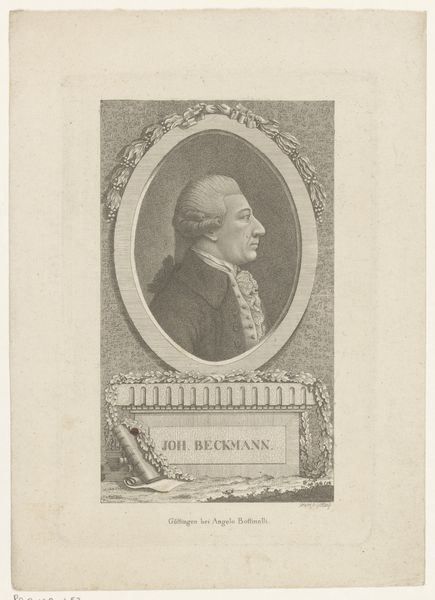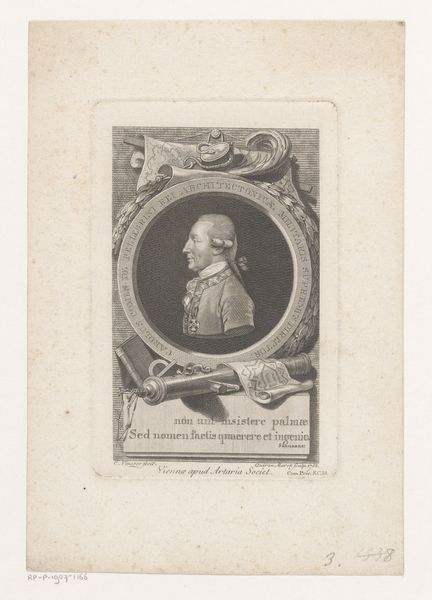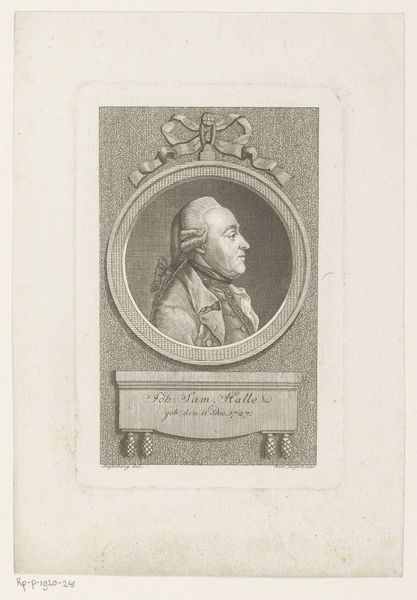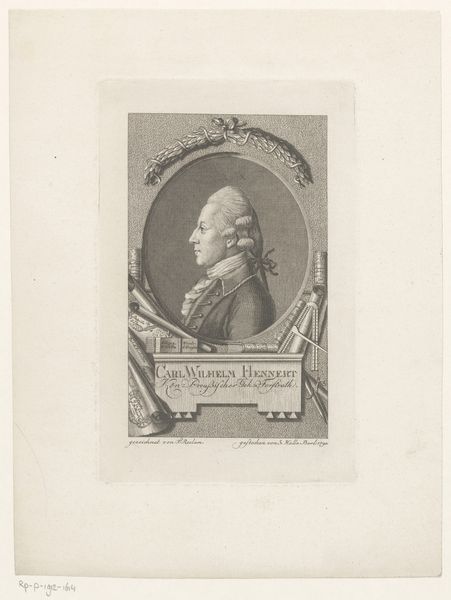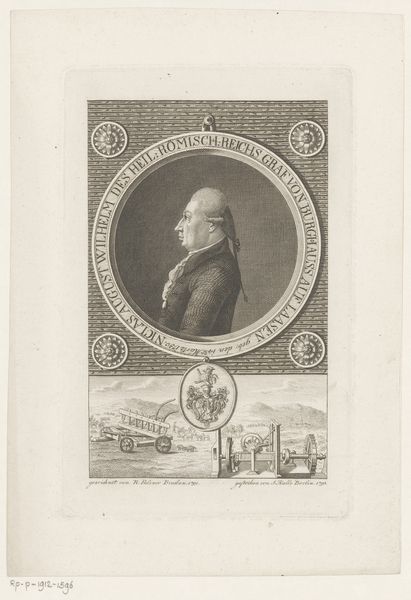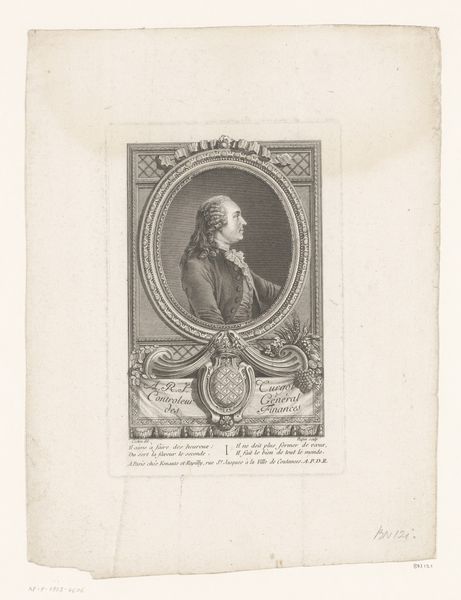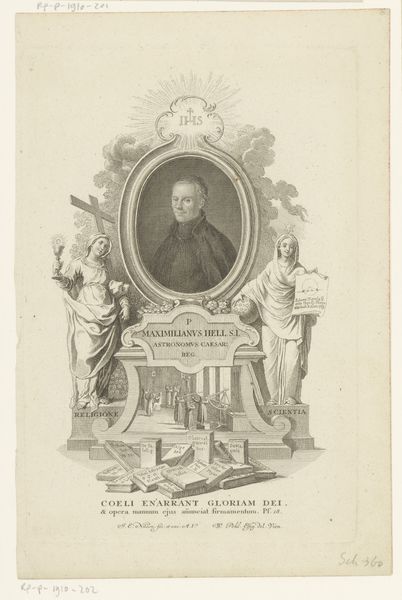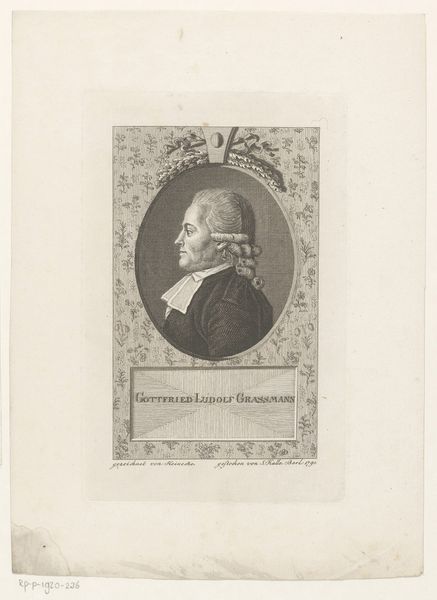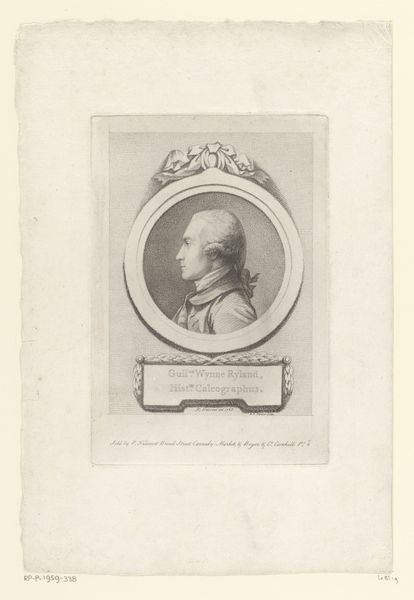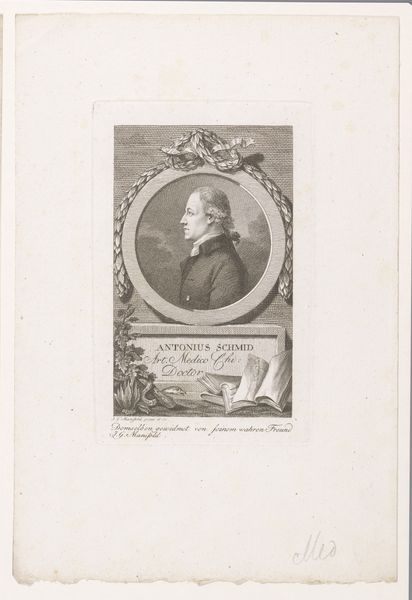
print, engraving
#
portrait
#
neoclacissism
#
ink paper printed
# print
#
pencil sketch
#
old engraving style
#
form
#
history-painting
#
academic-art
#
engraving
Dimensions: height 176 mm, width 107 mm
Copyright: Rijks Museum: Open Domain
Curator: Looking at "Portret van Johann Elert Bode" created in 1791 by Paul Malvieux, it’s striking how effectively it employs the neoclassical style to convey status and intellect. The portrait is an engraving, a print made of ink on paper. What’s your initial impression? Editor: The overwhelming impression is one of controlled elegance, achieved through meticulously fine lines. The details seem almost photographic despite being an engraving, capturing light and shadow with tremendous subtlety. Curator: The print reflects the late eighteenth-century Enlightenment ideals. We must contextualize the portrait of Bode. It's more than a likeness; it symbolizes the societal importance placed on intellectual figures, especially those like Bode, who made significant contributions to astronomy. The depiction seeks to situate Bode as an exemplar of scientific reason. Editor: Yes, the circular frame—laurel leaves entwined—reinforces that. And below the portrait medallion we observe an allegorical figure reclining beside an elaborate globe and set-square, underlining his association with cartography, mathematics, and cosmic understanding. It all creates a deliberate structure where each element is designed to exalt his subject’s importance. The texture achieved through the hatching and cross-hatching gives an impression of depth. Curator: Examining the choice of the print medium is also relevant. In a time before photography, engravings allowed for wider distribution, democratizing knowledge and allowing more people to engage with scientific achievements. Thus the artistic execution has the objective to circulate knowledge within broader populations. Editor: So you're saying the form facilitates a specific message related to enlightenment, while I look more into the subtle techniques which result in the final image. We focus on different points but with a shared perspective! Curator: Precisely. Considering Malvieux's engraving within its historical context reveals deeper layers of meaning about intellectual authority and the dissemination of knowledge. It is fascinating to see that, using Malvieux's print as an entrypoint, the intersectional analysis of scientific achievement is within the context of societal shifts and technological advancement. Editor: Indeed, by concentrating on Malvieux’s technique, one discovers subtle methods by which even printmaking can be raised to artistry. It has been insightful.
Comments
No comments
Be the first to comment and join the conversation on the ultimate creative platform.
